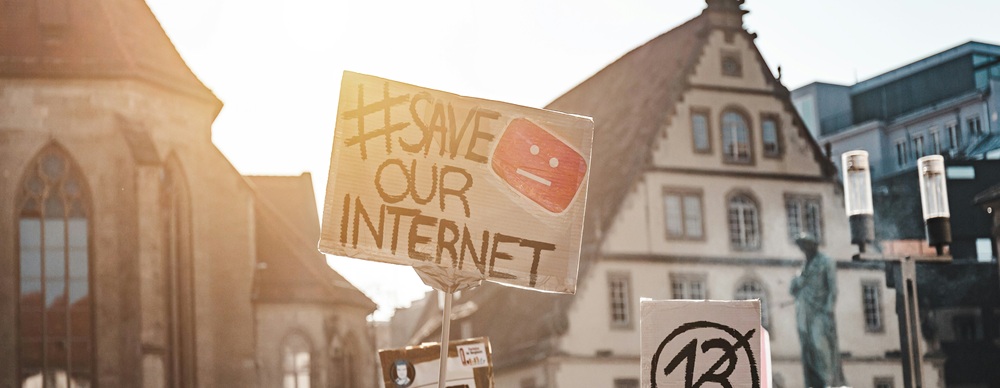From Age Gates to Bans and Blacklists — How Online Freedom Is Being Redefined
There was a time when the surfing the web felt like a digital Wild West — chaotic, creative, and uncontrolled. A space where communities thrived on anonymity, memes could shift culture overnight, and anyone with a voice had a chance to be heard. And that was what Tim Berners Lee probably intended when he tweeted ‘This is for everyone’, whilst being honoured as the “Inventor of the World Wide Web” at the opening of the 2012 London Olympic Games.
But that era may be coming to an end.
Increasingly, governments, corporations, and algorithms are asserting control over how, when, and what we access online. The justification? Safety, mental health, and public order. But at what cost?
From the UK to Australia and across the world, the open internet is being quietly restructured. And many fear we may be watching the slow death of the free web.
The UK’s OFCOM Age Verification Rules: Safety or Surveillance?
The United Kingdom has introduced stringent age verification requirements through its Online Safety Act, enforced by the regulator OFCOM (organisations can be fined up to £18m or 10% of their global revenue if they are found to have failed to stop harmful content appearing on their platforms.) The goal? To protect children from accessing explicit or harmful content. Platforms must implement strict mechanisms to verify a user’s age, potentially involving personal data like government IDs or biometric scans.
While well-intentioned, these rules raise serious privacy concerns. Who holds this data? How securely is it stored? And could it be repurposed for other forms of surveillance or censorship? Critics warn this could create a chilling effect, where users self-censor or avoid certain content altogether for fear of being monitored. Another major issue with this approach is that of false positives – the zealous over blocking of sites that contain adult themes but do not contain harmful content. A recent investigation by the BBC has shown that news sites showing video footage of the conflicts in Gaza and Ukraine, and parliamentary debates on topics such as rape, are being blocked as age restricted content. This takes us back to a point 25+ years ago when the early web filters were emerging.
Australia’s Proposed Teen Social Media Ban
Down under, Australia is exploring one of the most extreme forms of online age control: banning anyone under the age of 16 from joining social media. Proponents argue that this would shield young minds from the psychological harms of platforms like TikTok and Instagram.
But opponents see it differently. They argue it strips parents of agency, infantilizes teens, and sets a dangerous precedent for limiting access to digital spaces. The ban also raises logistical questions: how will platforms enforce it? And will it simply drive young users to underground or unmoderated corners of the web?
The Global Push for Screen Time Regulations
Regulating screen time is another growing trend. China has already imposed strict limits on minors’ online gaming, while US lawmakers have floated similar ideas for social media use. These laws aim to protect mental health and encourage offline engagement, especially among youth.
But again, implementation is tricky. Is it the government’s role to determine how long someone can be online? Could such policies expand to affect adults? As screen time becomes politicized, there are fears that “digital wellbeing” laws could evolve into broader tools for behavioural control.
Corporate Censorship and the Case of Huda Beauty
Beyond legislation, there’s the growing influence of corporate censorship. The Huda Beauty controversy is a prime example. After the brand’s founder, Huda Kattan, made statements perceived as anti-Israel, she faced intense backlash. Retail partners distanced themselves, consumers organised boycotts, and social platforms allegedly suppressed her content.
Regardless of where one stands politically, the incident highlights how online expression is increasingly governed by market forces and public sentiment. The right to speak doesn’t guarantee the right to be heard — especially when powerful platforms or brands decide otherwise.
The Bigger Picture: Walled Gardens and Filtered Feeds
Taken together, these developments signal a shift from a user-driven internet to one shaped by top-down controls. Algorithms now decide what content we see. Age gates and screen time laws determine when we can log on. Brands and platforms draw the line on what speech is acceptable.
The internet was once imagined as a digital commons — messy, imperfect, but radically open. Today, it’s becoming a series of walled gardens, policed in the name of safety, sanitized for advertisers, and increasingly censored in response to political or cultural pressure.
What We Risk Losing
Freedom of expression. Privacy. Anonymity. Access to diverse ideas. These are not abstract concepts; they are the foundations of the internet as we knew it. As more regulations and corporate controls come into play, we risk trading these freedoms for curated convenience and illusionary safety.
A Call to Awareness
This isn’t a call to abandon regulation altogether. The internet does need guardrails — especially to protect children, prevent abuse, and fight misinformation. But the current trajectory leans heavily toward control without transparency, safety without autonomy.
The question isn’t whether we need rules. It’s whether we can build a digital future that balances protection with freedom, and governance with trust. Because if we can’t, then yes — the days of the free internet may truly be numbered.
Image Sara Kurfeß Unsplash



Comments are closed.